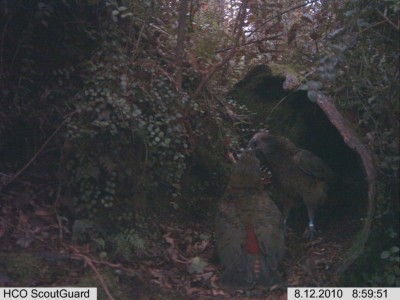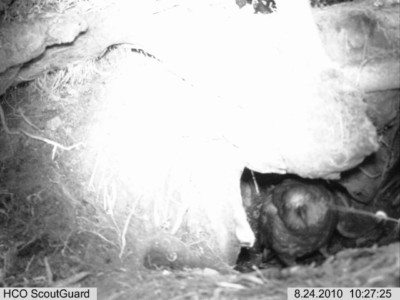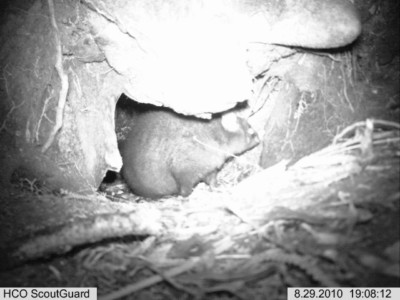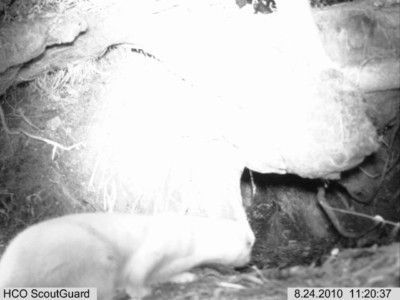The lowland kea of Westland National Park have never been previously investigated with the exception of cognitive tests. As usual we may never know the answer to why they choose to live here and how they adapted to forage in the lush temperate rain forests after so long in the harsh mountains. But soon we will have an in-site to their nesting behaviour and hopefully understand their susceptibility to introduced mammal predation. Already I have to correct a previous statement using updated information gathered recently in the field. After three years of planning and preparation we recently had half a dozen nests under 24hr camera surveillance.
The first season we found just two active nests, last year five were found but they were not all active at the same time as some were predated very early and others failed when the large chicks were killed by predators. This year we had six all active and most found during the egg laying stage (which does wonders for the Brood survival calculations) and sadly already one has been exterminated under our nose. Our intention is too use this work to understand what risk there is to kea inside areas where we can successfully control introduced mammals and in areas where we don’t have the resources to undertake predator control. In short are kea dying without our help? The answer is not simple and after three years of hard work we are over half way through the process. Already we have recorded introduced possums visiting our nest entrances, mustelids from Europe (Stoats) are the worst predator in our forest and two have been recorded peeking into a nest.
Also a surprise, our own native Kiwi bird, a very rare endemic, has been recorded passing the entrances. Kea, possum and Kiwi are all cavity users so this is logical, however the Stoat is a ruthless killer, often killing more than it can eat and therefore burying the left over for later. These are the animals that will kill all chicks in the nest one by one and eat none! The only evidence of their visit is the obvious absence of the brood. And with luck the parents upset in the trees above. Worse case is a dead female which is often the case in Kaka our other large forest Kea. The correction I must make is last time I wrote that females remain in the hole for months on end but with our new nest camera effort we see her often sitting at the entrance and exiting all through the night to stretch and to do her toileting. Which is hardly like going out to a movie and diner but it is a start.




































